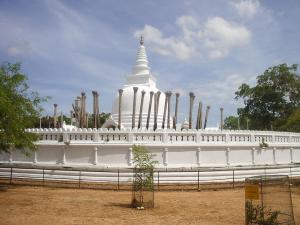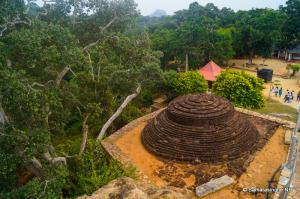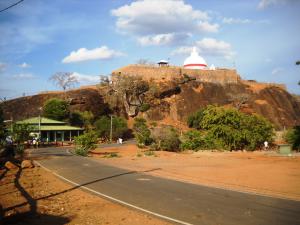ලම්බකර්ණ වංශය I | අනුරාධපුරය - (66 - 110)
| මූලාශ්රය | රාජ්ය නාමය | රාජ්ය කාලය |
| මහාවංසය | වසභ | 44-0-0 |
| පූජාවලිය | වහප් | 44-0-0 |

Thuparamaya is an ancient Buddhist temple in Anuradhapura, Sri Lanka. Located in the sacred area of Mahamewna park, the Thuparamaya Stupa is the earliest Dagoba to be constructed in the island, dating back to the reign of King Devanampiya Tissa (247-207 BC). The temple has been formally recognised by the Government as an archaeological site in Sri... 
Built : දේවානම්පියතිස්ස රජතුමා,
Some Construction : ලංජතිස්ස රජතුමා,
Some Construction : වසභ රජතුමා,
Some Construction : ගෝඨාභය රජතුමා,
Some Construction : ධාතුසේන රජතුමා,
Some Construction : II වන අග්ගබෝධි රජතුමා,
Some Construction : දාඨෝපතිස්ස රජතුමා,
Some Construction : 2 වන දාඨෝපතිස්ස රජතුමා,
Some Construction : 2 වන කස්සප රජතුමා,
Some Construction : මානවම්ම රජතුමා,
Some Construction : 6 වන අග්ගබෝධි රජතුමා,
Some Construction : 2 වන මහින්ද රජතුමා,
Some Construction : 2 වන දප්පුල රජතුමා,
Some Construction : 1 වන සේන රජතුමා,

පරිවාර චෛත්ය ලෙස වසභ රජතුමා ඉදිකළ අනෙක් චෛත්ය දහයේ... 
Built : වසභ රජතුමා,

Sithulpawwa Rajamaha Viharaya is an ancient Buddhist monastery located in Hambantota District, South Eastern Sri Lanka. Situated 18 km east of the pilgrimage town Katharagama, it is believed to have been built in the 2nd century B.C by king Kavantissa. Sithulpawwa Vihara can be reached by travelling 18 miles along the Tissamaharama-Yodhakandiya road towards the Yala National Park. The name Sithulpawwa is derived from the word "Chiththala Pabbatha", which means the hill of the... 
Built : කාවන්තිස්ස රජතුමා,
Added : වසභ රජතුමා,
Added : කනිට්ඨතිස්ස රජතුමා,